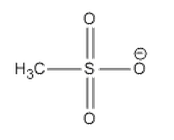![]()
![]()
![]()
Use LEFT and RIGHT arrow keys to navigate between flashcards;
Use UP and DOWN arrow keys to flip the card;
H to show hint;
A reads text to speech;
22 Cards in this Set
- Front
- Back
|
physical properties |
1. H bonding (makes BP higher) 2. higher boiling point 3. water soluble (depending on length of hydrocarbon) 4. branching: higher melting/freezing point, lower BP (less surface area) |
|
|
Alcohol (tertiary) --> Alkyl halide |
1. Sn1 reaction using 2. HBr (or any acid halide) |
|
|
Alcohol (primary) --> Alkyl halide |
1. SN2 reaction 2. HBr (or any acid halide) |
|
|
alcohol (secondary) --> ketone |
1. oxidation 2. any secondary alcohols will oxidize to ketones 3. H2SO4 , heat |
|
|
alcohol (primary) --> carboxylic acids |
1. only with strong oxidizing agents (KMnO4, CrO3, etc) 2. oxidation |
|
|
alcohol (primary) --> aldehyde |
1. only with weak oxidizing agents (PCC, etc) 2. oxidation |
|
|
alcohol oxidation |
1. primary: aldehyde or carboxylic acids 2. secondary: ketones 3. tertiary: won't oxidize |
|
|
protect alcohol |
add Cl-SiMe3 to R-OH |
|
|
deprotect alcohol |
add F- |
|
|
alcohol --> alkyl halide |
1. SN1 with HBr (tertiary) 2. SOCl2 3. PBr3 |
|

|
tosylate ion |
|

|
triflate |
|

|
mesylate ion |
|
|
alcohol ---> mesylate |
MsCl |
|
|
alcohol ---> tosylate |
TsCl |
|
|
alcohol --> ester |
1. esterification 2. carboxylic acid |
|

|
forward: oxidation reverse: reduction |
|

|
forward: oxidation (KMnO4, CrO3) reverse: reduction |
|

|
1. oxidation 2. H2SO4, heat |
|

|
esterification |
|
|
acidity |
lower pKa = more acidic
|
|
|
rank following based on acidity: aldehydes/ketones, carboxylic acids, alcohols, water, esters, phenols |
carboxylic acids > phenols > water ~ alcohol > aldehyde/ketons > esters |

